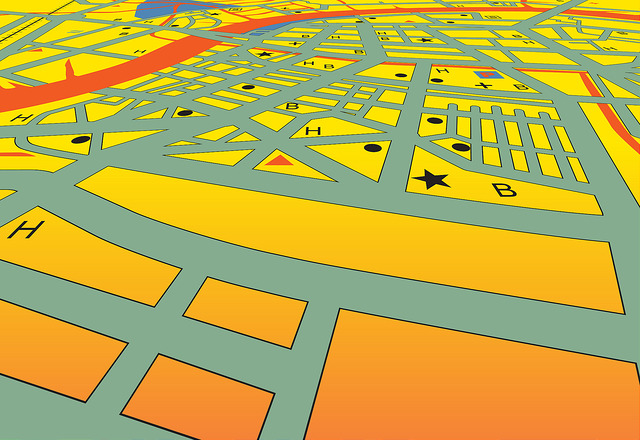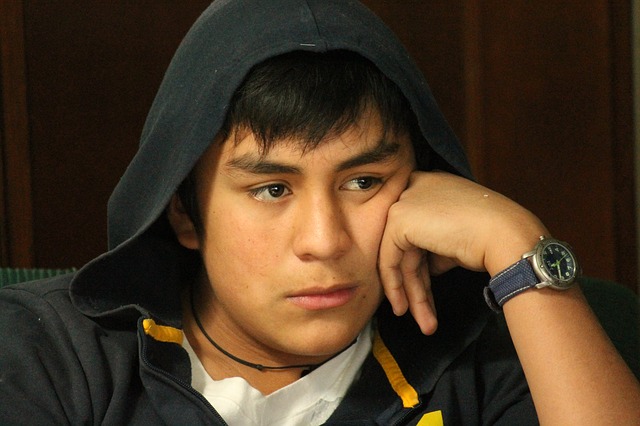
“Are social media bad for our children’s mental health?” This and similar headlines have been hotly debated in the news and public discourse for several years. A recent example was an article published last year in the popular psychology magazine Psychology Today, proposing that our ontogenetically ancient brains were wired to engage with others face-to-face, not via online media. However, these claims typically have weak scientific foundations with the empirical evidence on the behavioural and neural consequences of social media use being slow to emerge (Odgers, 2018).
Crone and Konijn’s recent (2018) review in Nature Communications: Media Use and Brain Development in Adolescence offers a very timely synthesis of the relevant literature focusing on the impact of social media use on behaviour and brain development in young people. It is particularly interesting to explore the role of social media use in young people, given that:
- 96% of 16-24 year olds in the UK owned a smartphone in 2017
- Young people show heightened sensitivity to social information relative to adults (Blakemore & Mills, 2014; Foulkes & Blakemore, 2016)
- Young people have great developmental plasticity (Dahl, Allen, Wilbrecht, & Suleiman, 2018).
The review discusses experimental neuroimaging studies focusing on three domains in which social media may have an impact on young people:
- Online social rejection and acceptance
- Peer influence on young people’s evaluations of themselves and others
- The role of emotions in media use.
The decision to focus on the experimental literature was driven by the consideration that these studies would provide more tightly controlled boundary conditions to explore the role of social media use compared to other social media research, which has often interpreted simple correlations between social media use and outcomes of interest.
The field of study’s recency means this review cannot provide definitive answers on the influence of social media use on brain development, instead it offers a framework for organising future research in the area.

This new narrative review offers a framework for organising future research in this area.
Methods
This is a narrative review of the literature without explicitly specified search criteria. The results that we have summarised below should therefore be interpreted with the caveat that it is not known whether the authors discussed all available literature, or only a selection that they considered representative of that literature. Similarly, no information is provided on the relative quality of the studies discussed.
Results
The review suggests that compared to adults, adolescents are particularly sensitive to rejection/acceptance feedback and peer influence online. These feelings of rejection, as well as anger that originates from other sources, are then associated with more impaired moral judgement and retaliatory behaviours in this age group. Importantly, given the general polemic surrounding social media use in young people, the review also highlights research that shows the positive impact of online peer influence on prosocial behaviours such as monetary donations.
When discussing the impact on “brain development” Crone and Konijn review cross-sectional functional neuroimaging studies. The increased rejection sensitivity to online social rejection is associated with greater activation in the subgenual anterior cingulate cortex and medial prefrontal cortex when undergoing social exclusion in the lab, suggesting that adolescence is a time period marked by enhanced sensitivity to peer rejection. Social acceptance behaviours such as likes, encouraging comments and hashtags are described as socially rewarding experiences that trigger subjective experience of pleasure and reward in adolescents. Crone and Konijn link these behavioural findings to the neuroimaging literature on reward processing in adolescence, which show ventral striatal activation in response to reward processing to peak during adolescence. However, it should be noted that these studies have predominantly investigated reward processing in response to monetary rewards and none of the imaging studies investigated online reward processing.
Peer influence on opinions is mostly studied in the lab in the form of behaviour change after seeing the opinion of others, either adults or adolescents. These studies show peer influence on behaviour to peak during early adolescence (e.g., Knoll, Magis-Weinberg, Speekenbrink, & Blakemore, 2015). At the neural level, the dorsal anterior cingulate cortex and insula, regions that are also activated by both social rejection and acceptance, are involved in aligning one’s own behaviour with that of the group after receiving peer feedback (on issues ranging from personality to body image). This is of interest as we recently showed that these regions are similarly activated for peer acceptance and rejection feedback (Dalgleish et al., 2017), and suggest that activity in these regions reflects social evaluation, rather than rejection sensitivity per se.
Emotions guide adolescent social media use, and its impacts. Crone and Konijn describe that emotion research focussed on behavioural responses to social rejection; retaliation after social rejection associated with increased dorsolateral prefrontal cortex activation. The authors suggest that the imbalance between heightened emotional responsivity and protracted brain development in regions that underlie reflective processing and cognitive control adolescence may be key in explaining the heightened emotional sensitivity in adolescence. This suggestion is based on findings from cross-sectional studies linking adolescents’ heightened subcortical brain activity with risk taking, reward and emotion processing. However, a small longitudinal study did not find that the developmental mismatch between the maturation of regions involved in emotion processing, versus those involved in regulation, was related to heightened risk taking behaviour in adolescence (Mills, Goddings, Clasen, Giedd, & Blakemore, 2014). These contrasting findings emphasise the need for future longitudinal designs in order to shed light on the relation between brain development and adolescent sensitivity to social media.

This review suggests that adolescents are particularly sensitive to rejection/acceptance feedback and peer influence online.
Conclusions
Based on the reviewed literature, Crone and Konijn conclude that adolescence may be a period of heightened sensitivity to the positive and negative influence of social media in a number of ways. First, adolescents show increased social rejection and acceptance sensitivity, they have heightened emotional reactivity, and their sensitivity to social influence when forming opinions.
Importantly, Crone and Konijn also emphasise the role that individual differences play in any potential effects of social media use on youth brain development. The importance of studying individual differences in research focusing on adolescent brain development is further highlighted in another review paper (Foulkes & Blakemore, 2018) included in the same special collection across the range of Nature publications focusing on adolescence.
Crone and Konijn conclude with the recommendation that future research should be aimed at:
understanding how media may impact youth and who is most vulnerable and under which conditions.

Adolescence may be a period of heightened sensitivity to the positive and negative influence of social media.
Strengths and limitations
The review’s major strength is that Crone and Konijn marry distinct constructs from social media influence studies with those often used in experimental laboratory studies that investigate adolescent brain responses and development. Thereby strengthening and extending cross-sectional effects commonly described in social media studies with effects found under more stringent experimental conditions, which allows for stronger assumptions about causality to be drawn. However, unfortunately, most experimental studies to date are cross-sectional in nature. It therefore remains unclear how the discussed effects may change over during adolescent brain development.
Furthermore, it is not clear why social rejection and acceptance, peer influence on opinion, and emotion precedence were chosen as potential mechanisms through which social media use may impact on brain development. From the reviewed literature it remains unclear how certain experimental paradigms reviewed here, such as the Cyberball game (Eisenberger, 2012), relate to real-world online behaviours, such as online social rejection. Real-world online rejections may be more potent in certain instances and subtler in others, with arguably large individual differences in rejection sensitivity that may prove critical to the impact of social media use. Other paradigms such as for example studies using chat room or rating others photos may be closer approximations of real-life social media use and its impact on brain development. We therefore propose that it is important that future studies investigate how well experimental paradigms reviewed translate to real-time online behaviours in youth.

It’s important that future studies investigate how well experimental paradigms reviewed translate to real-time online behaviours in youth.
Conflicts of interest
None
Links
Primary paper
Crone, E. A., & Konijn, E. A. (2018). Media use and brain development during adolescence. Nature Communications, 9(1), 588. http://doi.org/10.1038/s41467-018-03126-x
Other references
Blakemore, S.-J., & Mills, K. L. (2014). Is Adolescence a Sensitive Period for Sociocultural Processing? Annual Review of Psychology, 65(1), 187–207. http://doi.org/10.1146/annurev-psych-010213-115202
Crone, E. A., & Konijn, E. A. (2018). Media use and brain development during adolescence. Nature Communications, 9(1), 588. http://doi.org/10.1038/s41467-018-03126-x
Dahl, R. E., Allen, N. B., Wilbrecht, L., & Suleiman, A. B. (2018). Importance of investing in adolescence from a developmental science perspective. Nature, 554(7693), 441–450. http://doi.org/10.1038/nature25770
Eisenberger, N. I. (2012). The pain of social disconnection: examining the shared neural underpinnings of physical and social pain. Nature Reviews. Neuroscience, 13(6), 421–34. http://doi.org/10.1038/nrn3231
Foulkes, L., & Blakemore, S.-J. (2016). Is there heightened sensitivity to social reward in adolescence? Current Opinion in Neurobiology, 40, 81–85. http://doi.org/10.1016/j.conb.2016.06.016
Foulkes, L., & Blakemore, S.-J. (2018). Studying individual differences in human adolescent brain development. Nature Neuroscience, 21(3), 315–323. http://doi.org/10.1038/s41593-018-0078-4
Knoll, L. J., Magis-Weinberg, L., Speekenbrink, M., & Blakemore, S.-J. (2015). Social Influence on Risk Perception During Adolescence. Psychological Science, 26(5), 583–592. http://doi.org/10.1177/0956797615569578
Mills, K. L., Goddings, A.-L., Clasen, L. S., Giedd, J. N., & Blakemore, S.-J. (2014). The Developmental Mismatch in Structural Brain Maturation during Adolescence. Developmental Neuroscience, 36(3–4), 147–160. http://doi.org/10.1159/000362328
Odgers, C. (2018, February). Smartphones are bad for some teens, not all [News].
Photo credits
- Photo by wenping wang on Unsplash
- Tadmit MFA CC BY 2.0

[…] This is your brain on social media https://www.nationalelfservice.net/treatment/digital-health/this-is-your-brain-on-social-media/ … […]